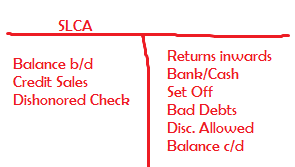
Hello. I have started the morning with Accounting 😮 In case you’re wondering about my time zone, it’s UTC +6 hours 😮 So, yeah. Morning. I am probably living in the future for most of my readers. If you want to ask me about the future, feel free to do so. But the answers will be boring, I sincerely warn you.
Today’s scrappy lesson is on Control Accounts! Can I hear a what-what? Dyam now!
Control Accounts: This is a mini-trial balance to find inconsistencies within accounts 😮 They contain the ‘totals’ of various accounts from a particular time.
Sales Ledger Control Account: Summaries of Debtor Accounts from the Sales Ledger. This account is the effects WE will have for the sh*t they deal with. 😮 Eg. Their return inwards is debit for them. But it’s an account for us! So it’s the oppiste. Hence the Return Inwards is credit on the total debtors account. Yeay!
Purchase Ledger Control Account: Summaries of credit-supplier’s accounts from the Purchase Ledger. This account is totally for us 😛 Wel the other one was too but that’s a little more confusing than this.
Dishonored Cheque: You receive a cheque: Debtor credited & Bank debited.Here the cheque is dishonoured, which means the bank was tolerant enough to deal with your not-paying-back crap for a while. So the person you didn’t pay back to yet is now a debtor, hence debtor debited and bank credited.
Set/Offs or Contras are used to correct mistakes in amounts :I Not sure what it DOESN’T have to do wth PORCOW, but whatever. In the Sales Ledger Control Accounts, this occurs on the credit side.
Image by Lila





